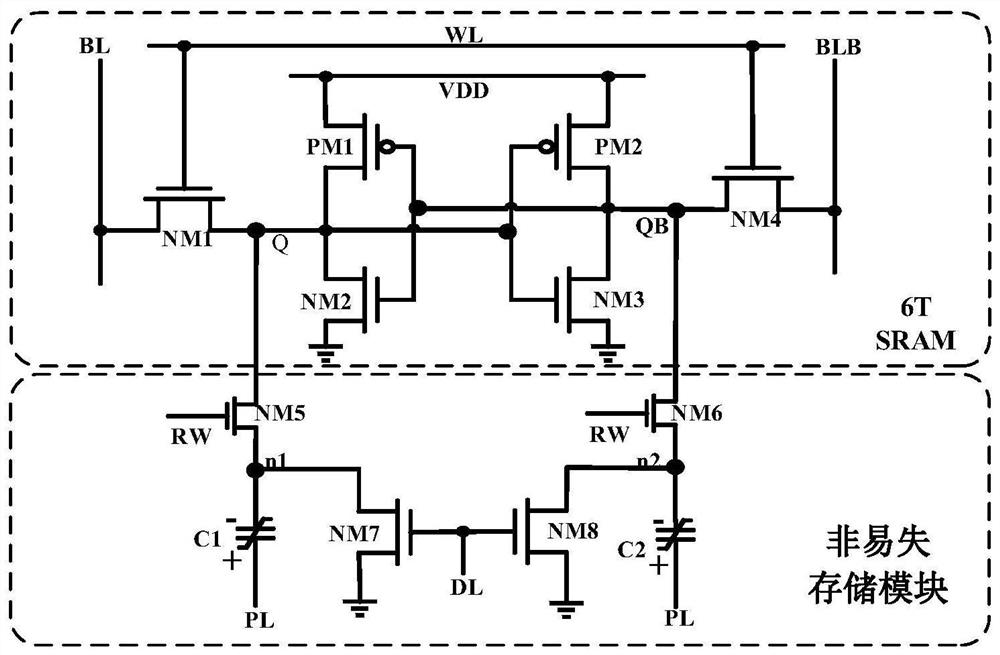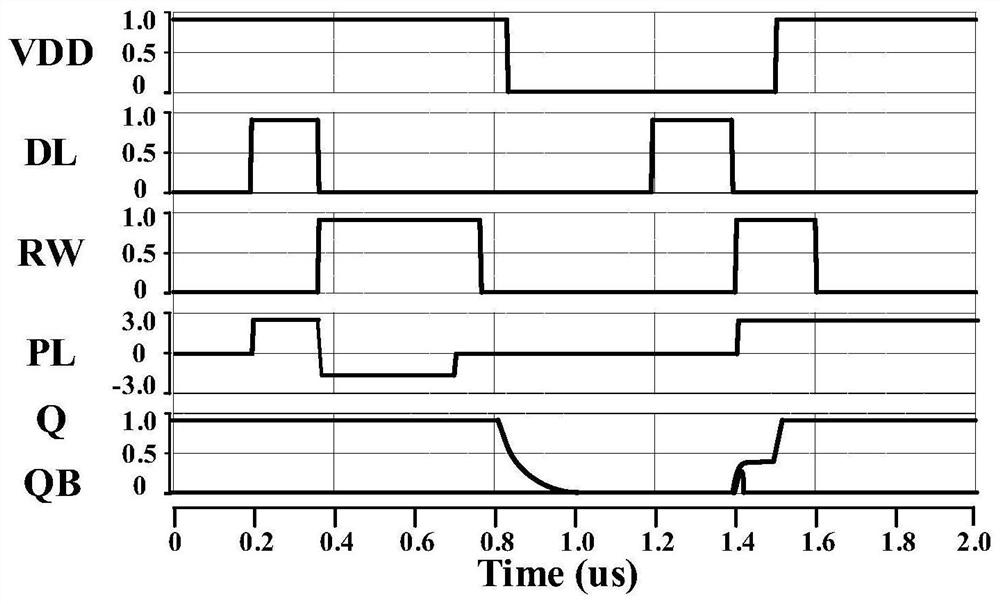Nonvolatile SRAM unit based on hafnium-based ferroelectric capacitor
A ferroelectric capacitor, non-volatile technology, applied in the field of non-volatile SRAM cells, can solve the problems of being easily affected by the process, low data recovery accuracy, low reliability, etc.
- Summary
- Abstract
- Description
- Claims
- Application Information
AI Technical Summary
Problems solved by technology
Method used
Image
Examples
Embodiment
[0013] Example: such as figure 1 As shown, a non-volatile SRAM cell based on hafnium-based ferroelectric capacitors, including 6T SRAM and non-volatile memory modules, 6T SRAM includes a bit line BL for reading and writing, and a word line WL for gating access , the reverse phase line BLB for reading and writing, the first PMOS transistor PM1, the second PMOS transistor PM2, the first NMOS transistor NM1, the second NMOS transistor NM2, the third NMOS transistor NM3 and the fourth NMOS transistor NM4, the first The source of the PMOS transistor PM1 and the source of the second PMOS transistor PM2 are both connected to the power supply voltage VDD, the drain of the first PMOS transistor PM1, the gate of the second PMOS transistor PM2, the drain of the first NMOS transistor NM1, and the drain of the second PMOS transistor PM1. The drain of the second NMOS transistor NM2 is connected to the gate of the third NMOS transistor NM3, and its connection end is the first storage node of...
PUM
 Login to View More
Login to View More Abstract
Description
Claims
Application Information
 Login to View More
Login to View More - R&D
- Intellectual Property
- Life Sciences
- Materials
- Tech Scout
- Unparalleled Data Quality
- Higher Quality Content
- 60% Fewer Hallucinations
Browse by: Latest US Patents, China's latest patents, Technical Efficacy Thesaurus, Application Domain, Technology Topic, Popular Technical Reports.
© 2025 PatSnap. All rights reserved.Legal|Privacy policy|Modern Slavery Act Transparency Statement|Sitemap|About US| Contact US: help@patsnap.com



